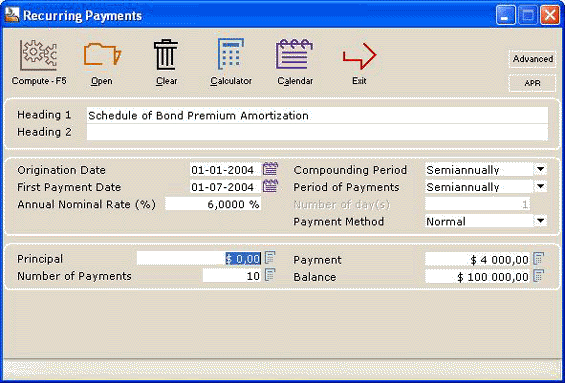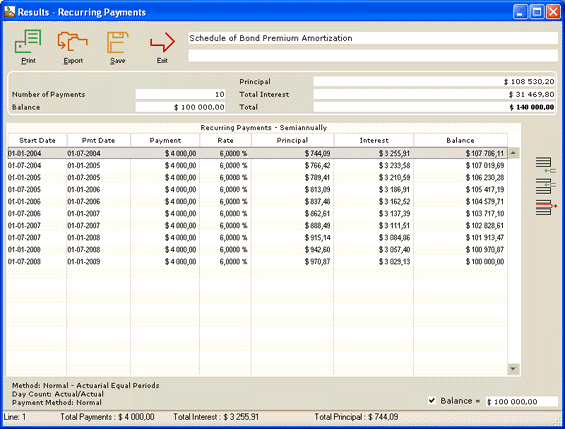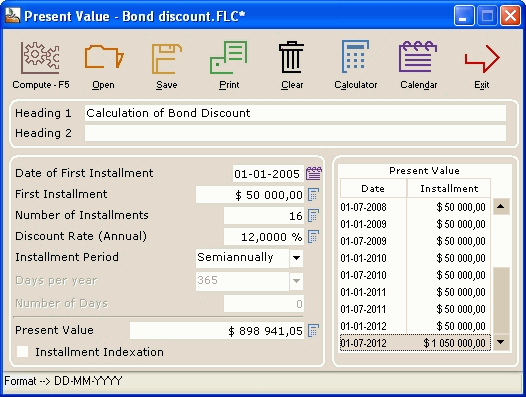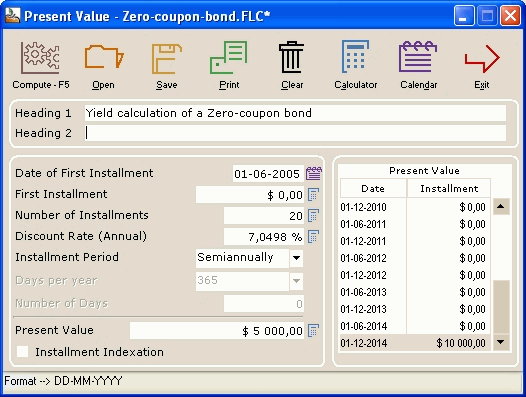Bonds
See also:
The dollar ($) has been used in these examples, but any other currency (€, £, F, ¥, R, DA, Rs… etc.) may be used.
The first calculation below may use Fixed (unique interest rates) or Variable rates.
Real-life examples:
Calculation of bond premium (schedule of bond premium amortization – effective interest method)
Calculation of bond premium
What is the premium on 5-year, 8% bonds, sold to yield 6%? Bonds payable: 100,000.00
The 4000 payment is calculated: 100,000 x .08 x 6/12
The “Principal” is left blank (0.00) and will be our Bonds payable + Premium on bonds payable

The “Balance” can accommodate up to 999,999,999.00.
The Results screen gives us a Principal of 108,530.20, thus a Premium of 8,530.00.

If the Premium is known, the Payments or the Yield (interest rate) may be calculated when the other data is known Simply leave the unknown field blank.
The calculation may also be done with interest rates that vary over time. An interest table (historic or future) may be created with the dates and change of rate and then used in Variable rate calculations.
Calculation of bond discount
A company sells the 10%, eight-year bonds with a face value of 1,000,000 on January 1, 2005, when the market rate of interest is 12%. What is the discount on the issuance of the bonds?
Use, in “Other Calculations”, the “Present Value” calculation.
The 50,000 payment (installment) is calculated: 1,000,000 x .10 x 6/12
50,000 is entered for each of the 16 periods and the face value (1,000,000) is entered on the maturation date. Thus yielding a discount price of 898,941.

Zero-coupon bond calculations
What is the yield of a 10-year zero-coupon bond sold at a price of 50 (or 5000 for a 10 000 bond)?
Takes a few manipulations to do this but done quite easily….
We could also have calculated the Price had only yield been known.

